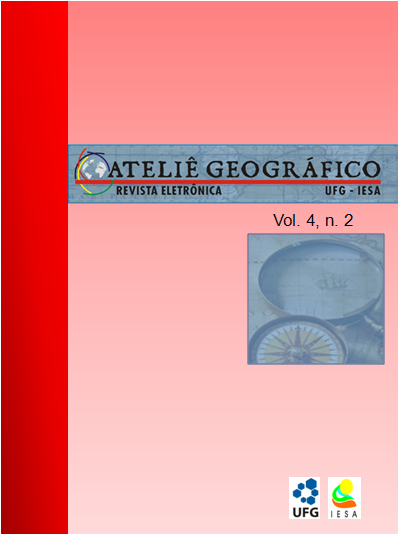CORN PLANTATION AND THE RITUALS OF THE TIME IN THE IXTLAHUACA-JOCOTITLÁN VALLEY, MEXICO
DOI:
https://doi.org/10.5216/ag.v4i2.9907Abstract
Based on ethnographic information, two variants of the humid-seasonal agricultural system are presented for the central region of Mexico, which is occupied by an important and enigmatic political and administrative jurisdiction. It corresponds to El Matlatzinco, which nested speakers-inhabitants of four Otomian languages (matlatzinca, otomi, mazahua and ocuilteco). The estimated territory of El Matlatzinco began to be known as the Valley of Toluca since early Spanish vice-reign in the sixteenth century. The first agricultural variant comes from the Ixtlahuaca-Jocotitlán Valley – located in the mountainous zone of that region – which we will refer to, from a comparative approach, the variant in the lacustrine zone of the ancient Matlatzinco. The aim of this paper is to describe two maize seasonal agriculture systems adapted to environments over 2,000 meters above sea level. In such high altitude places – where only one annual harvest is possible, especially due to frosts – cultivation must begin before the rainy season. Hence, the cases mentioned in both zones illustrate the detailed millenary environmental knowledge of these inhabitants, and show their environmental limitations in order to obtain the necessary humidity for the cultivation of the corn grain. The study also mentions the main agricultural festivities that are carried out by the Mesoamerican way of conceptualizing the world.Downloads
Download data is not yet available.
Downloads
Published
2010-05-13
How to Cite
MONTES, Laura Reyes; ZÁRATE, Beatriz Andrea Albores. CORN PLANTATION AND THE RITUALS OF THE TIME IN THE IXTLAHUACA-JOCOTITLÁN VALLEY, MEXICO. Ateliê Geográfico Journal, Goiânia, v. 4, n. 2, p. 1–43, 2010. DOI: 10.5216/ag.v4i2.9907. Disponível em: https://revistas.ufg.br/atelie/article/view/9907. Acesso em: 24 dec. 2025.
Issue
Section
Articles
License
Autores que publicam nesta revista concordam com os seguintes termos:- Autores mantém os direitos autorais e concedem à revista o direito de primeira publicação, com o trabalho simultaneamente licenciado sob a Licença Creative Commons Attribution que permite o compartilhamento do trabalho com reconhecimento da autoria e publicação inicial nesta revista.
- Os autores não serão remunerados pela publicação de trabalhos na Revista Ateliê Geográfico. Além disso, os conteúdos publicados são de inteira e exclusiva responsabilidade de seus autores, ainda que reservado aos editores o direito de proceder a ajustes textuais e de adequação às normas da publicação.
- Autores têm permissão e são estimulados a divulgar seu trabalho online (ex.: em repositórios institucionais ou na sua página pessoal), já que isso pode gerar alterações produtivas, bem como aumentar o impacto e a citação do trabalho publicado (Veja O Efeito do Acesso Livre).


